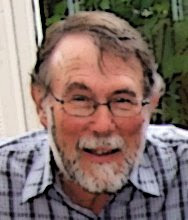Having crossed the continent to go to Christmas Island it seemed sensible to value-add to the trip with some time in Western Australia. So when we finally got back to Perth (2.30am) there were not too many hours of sleep before it was time to go and pick up a hire car and set off for the bottom left hand corner of the Great Southern Land.
Real sand! (Not like Christmas Island). Meelup Beach, near Dunsborough.
We drove down the spanky new Kwinana freeway, then on through Bunbury and Busselton to Dunsborough, which I remembered as a relaxed beachside town from field trips 20 or more years ago, but it has clearly moved upmarket since then. Plenty of posh shops, coffee shops and eateries, and our self-catering unit was palatial.
The coastal scenery in the south west corner is spectacular, and we spent a pleasant day in Cape Naturaliste National Park, enjoying the views, the flowers and a steady procession of whales passing just offshore. They seemed to be a mix of Humpbacks and Southern Rights, and the former were doing all their stuff: fin waving, tail slapping and breaching. It was frustratingly difficult to get the binoculars on the spot where a whale was going to breach, but we eventually got good views. All this was off the eastern side of the cape, and when we got to the whale viewing platform on the western side there wasn't much to see, to the disappointment of the tourists gathered there.
Cape Naturaliste. There are whales out there.
Sugarloaf Rock, Cape Naturaliste NP.
Reputedly the most photographed item of coastal scenery in the South West.
Wildflowers, lots of wildflowers.
What are they? Sorry, I don't know.
Lots and lots and lots.
Much of the coastal heathland was in flower, showing off the diversity of the WA flora. The coastal heathland is more or less intact, in contrast to some of the drier inland forest, which is full of introduced weeds.
Our other Dunsborough-based excursion was to the last remaining substantial remnants of tuart forest, a bit north of Busselton. Some fine trees, but not a lot of regeneration and amazing carpets of arum lilies underneath. Also a lot of mosquitoes, and it was only later in the day that we saw the signs about the risk of Ross River Fever in the spring and early summer! But we've been home for longer than the incubation period now, so we seemed to have escaped.
Tuart forest, Ludlow.
Arum lilies everywhere.
From Dunsborough we drove to Albany, passing right through the Margaret River area, where every turnoff seems to lead to another winery (or cidery or meadery), but conditions were not conducive to stopping. It rained very heavily, as it seems to have been doing for quite a while, since the country was all lush and green, and the dams all overflowing. But we did nip out for some tall karri forest and a waterfall, and also the huge tingle trees in the Valley of the Giants.
Waterfall near Margaret River.
That's probably sauvignon blanc, not water.
Karri forest.
Roots of a tingle tree.
They probably walk around at night.
In Albany we stayed in a charming little cottage built in the early 1900s, lined with horizontal boards inside and corrugated iron outside. My last visit to Albany was by ship (see the blog for May 2010), but driving in this time showed me that it's a much larger place than just the waterfront and centre. We didn't spend much time in the town, apart from evening meals.
Oakview Cottage, Albany.
The kitchen. The range was just for show.
We had a couple of targets in the Albany area: the Two Peoples Bay Nature Reserve and the Porongorups National Park. Two Peoples Bay is home to some very rare birds and mammals, including the Noisy Scrub Bird, once thought to be extinct, but re-discovered in the 1960s (I know, I know, but birders take this sort of thing seriously). The Noisy Scrub Bird is notoriously cryptic, and on the day of our visit it was probably clinging for dear life to the scrub to prevent it from being blown to South Australia. It was windy and wet enough for the waterproof pants, but we got some sunny breaks too.
I know that's a Banksia. Two Peoples Bay.
Jeannie's photo; she concentrated on the flowers.
Granite domes, Two Peoples Bay.
Domes of granite pop up all over the south west, and the Porongorups are a modest range 30-40 kilometres inland of Albany. We arrived at the picnic area in time to meet up with a tour group of naturalists from Canberra who were all directing their binoculars at something on the ground which quickly resolved itself as the Rufous Treecreeper, one of the the local specialities that we had come to see. We congratulated ourselves on having seen it so easily, before we found that it is ridiculously tame. One of the Canberra people remarked that she had expected a treecreeper, not a tirecreeper, as the bird explored their bus.
The not very elusive Rufous Flycatcher. Porongorup.
Well-adapted to picnic areas. Cleaning up the BBQ brush.
Proclaiming its territory from the top of the BBQ.
We walked part way along the base of the range and then back along the top. An undemanding walk with extensive views to the coast, and then inland to the substantially higher Stirling Range, another 20 kms or so away.
Climbing the Porongorups.
Porongorup Range.
Family group, Porongorup Range.
Stirling Range from the Porongorups.
It was just a taster of the south west corner, and as we drove the long straight road back to Perth we resolved to return to explore some more one day.























I love your pics... especially of the crags and the birds :-) nice work Big A! :-)
ReplyDelete